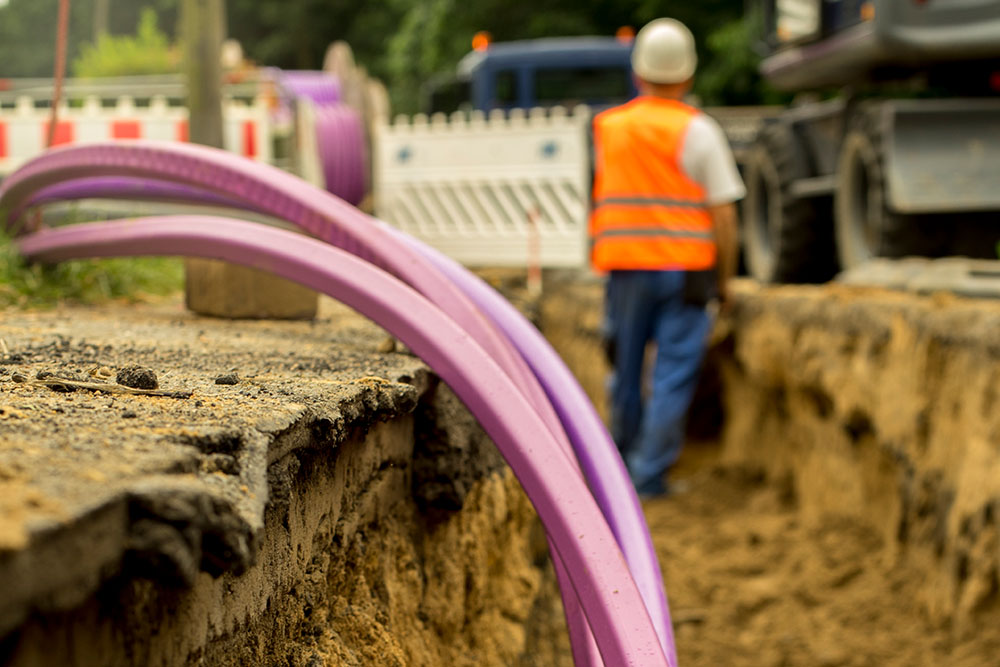What the Autumn Budget means for the logistics sector
04 Nov 24
Read more →

The answer lies in the pursuit of faster, more reliable internet connectivity through the installation of fibre broadband. In this week’s blog, we’re digging deeper into fibre broadband. What exactly is it? And how are telco companies tackling the gargantuan task of delivering the service across the nation?
A large portion of UK’s copper telecoms network is more than 100 years old. Most of it was installed during a time when telephones were a recent invention, and the concept of the internet was far beyond the imagination of an innovative science fiction author.
Copper lines transmit information by electricity and are still used to deliver broadband services in many countries. Although the technology has met the needs of telecommunications for decades, it simply cannot cope with the demand inflated by widespread internet usage.

As our world becomes increasingly digital, the demand for high-speed internet has reached unprecedented levels. Using multiple fibres in a similar sized pipe, full fibre broadband can transmit data at 10 to 15 times the speed of regular copper wires. This upgrade is essential to meet the growing connectivity needs of our cities.
Often referred to as FTTP (Fibre to The Premises), full fibre broadband represents the latest, fastest and most reliable form of internet connectivity in the UK. With next generation technology, full fibre directly links to your home, eliminating the need for a phone line.
This revolutionary connection, entirely reliant on fibre-optic technology, offers ultrafast and dependable speeds of up to 900Mb, surpassing standard fibre with a phone line by 25 times. Designed to meet the heavy demands of modern-day internet users, full fibre effortlessly allows users to work remotely, stream high quality video and play the latest video games online.

The colossal task of digging roads to install fibre-optic cables demands efficiency and speed. Long-term road closures and disruptions can inconvenience the public, thus why it’s important that businesses ensure that their engineers are fully-equipped to install the hardware as quickly and efficiently as possible.
The first step is to ensure that your engineers have the right equipment at the right time. An integrated supply chain system with both transport management (TMS) and warehouse management (WMS) proves invaluable in streamlining the inventory management process.
Instead of storing tools in a central location, the software identifies required items and arranges their collection from a nearby warehouse or inventory storage facility. This optimisation reduces travel time, simplifying the engineer’s life while cutting unnecessary costs and overheads.
The decision to dig up your street is not just about meeting current needs; it’s a forward-thinking initiative. Fibre broadband lays the groundwork for the cities of tomorrow, where smart infrastructure, autonomous vehicles and advanced healthcare systems will rely on robust and high-speed connectivity.
TrackTrans is a silent but powerful force behind the scenes, ensuring that the infrastructure revolution unfolds smoothly. By supporting engineers with best-in-class inventory management solutions, TrackTrans is helping to connect communities and propel cities into a digitally enhanced future.
Try our free demo today to discover how TrackTrans is helping shape the future of connectivity and infrastructure.
See how TrackTrans can be tailored to your business with no obligation. Simply complete the form and a member of our sales team will contact your directly.